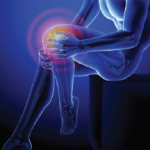Biomarkers, demographic data, lab data and other potential predictors all seem to hold some promise for predicting treatment response. But when trying to figure out the best response at 24 weeks, “the strongest predictor is the response at 12 weeks,” Dr. Kavanaugh said.
He pointed to findings that suggest a deeper analysis could offer guidance. An analysis of data from the ADACTA trial found that individual biomarkers didn’t predict response very well, but serum biomarkers that correlate with immunopathophysiology within the synovium were predictive. Specifically, those with a higher myeloid pattern rather than lymphoid pattern in the serum performed better with TNF inhibition than IL-6 inhibition.6
“We’ve been looking in too simplistic a way,” Dr. Kavanaugh said. “We need systems biologics approaches to look at these complex volumes of data, and hopefully systems biology can help us get to something we can really bring to the clinic. But we’re just not there yet.”
Thomas R. Collins is a freelance writer living in South Florida.
References
- Suhler EB, Lim LL, Beardsley RM, et al. Rituximab therapy for refractory scleritis: Results of a phase I/II dose-ranging, randomized, clinical trial. Ophthalmology. 2014 Oct;121(10):1885–1891.
- Mahr A, Batteux F, Tubiana S, et al. Brief report: Prevalence of antineutrophil cytoplasmic antibodies in infective endocarditis. Arthritis Rheumatol. 2014 Jun;66(6):1672–1677.
- Ez-Zaitouni Z, Bakker PA, van Lunteren M, et al. The yield of a positive MRI of the spine as imaging criterion in the ASAS classification criteria for axial spondyloarthritis: Results from the SPACE and DESIR cohorts. Ann Rheum Dis. 2017 Oct;76(10):1731–1736.
- Burgers LE, Allaart CF, Huizinga TWJ, et al. Brief report: Clinical trials aiming to prevent rheumatoid arthritis cannot detect prevention without adequate risk stratification: A trial of methotrexate versus placebo in undifferentiated arthritis as an example. Arthritis Rheumatol. 2017 May;69(5):926–931.
- Gerlag D, Safy M, Maijer K, et al. Prevention of rheumatoid arthritis by B cell directed therapy in the earliest phase of the disease: The Prairi study. Annals of the Rheumatic Diseases. 2016;75:125–126.
- Dennis G Jr, Holweg CT, Kummerfeld SK, et al. Synovial phenotypes in rheumatoid arthritis correlate with response to biologic therapeutics. Arthritis Res Ther. 2014;16(2):R90.


